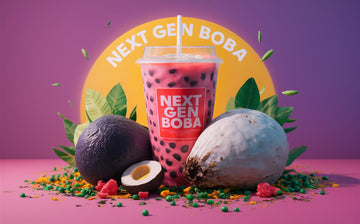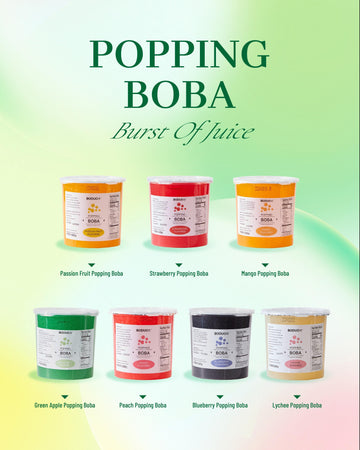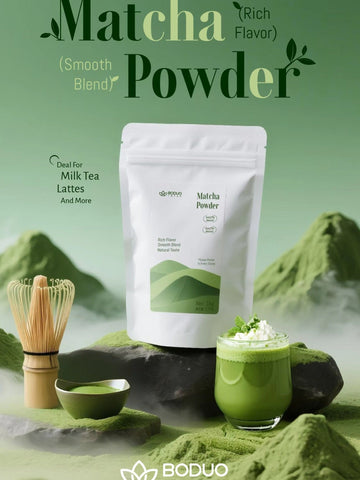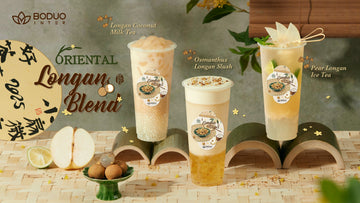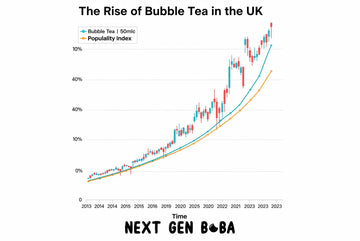Bubble tea, that delightful concoction of chewy pearls and vibrant teas, has taken the world by storm. But at the heart of this textural and flavourful beverage lies a humble ingredient: tapioca. This blog post delves into the fascinating history of tapioca, tracing its journey from the jungles of South America to the bustling teahouses of Taiwan, where it would become an integral part of the iconic bubble tea.
What is Tapioca, Precisely?
The Oxford English Dictionary defines tapioca (first recorded use in 1856) as "a white, floury starch obtained from the grated roots of cassava (Manihot utilissima), a tropical plant native to South America." Cassava itself has a long history, cultivated by indigenous peoples in the Amazon basin for millennia. The word "cassava" likely originates from the Tupi word "caçábi," meaning "to squeeze," referring to the process of extracting the starchy liquid from the cassava root.
Tapioca production involves grating the cassava root, then pressing out the poisonous liquid (hydrocyanic acid) before drying the remaining starch. This process renders the cassava safe for human consumption and concentrates the starchy goodness that gives tapioca its unique properties.
Tapioca's Arrival in Taiwan: A Colonial Twist
The arrival of tapioca in Taiwan is intertwined with the island's colonial history. During the 17th century, the Dutch East India Company introduced cassava to Taiwan, then known as Formosa, as a readily available source of sustenance. The cassava plant's ability to thrive in less-than-ideal conditions made it a valuable crop, particularly during times of famine.
Over time, the Taiwanese people adopted cassava and its derived product, tapioca, into their culinary repertoire. It became a staple ingredient in various dishes, from savoury stews to sweet puddings. One such traditional Taiwanese dessert is "fen yuan" (meaning "rounded powder"), which are small tapioca pearls simmered in a sweetened broth.
The Birth of a Beverage Sensation: Bubble Tea's Tapioca Triumph
The exact origin of bubble tea remains shrouded in playful debate, with several competing claims for its invention. However, most accounts agree that the key ingredient – the chewy tapioca pearls – played a pivotal role in its rise to prominence.
In the 1980s, Taiwan's vibrant night markets witnessed a surge in popularity of shaken tea drinks. These were typically iced teas mixed with milk and/or fruit syrups. It is around this time that the first instances of adding tapioca pearls to these shaken teas emerged. Some stories credit tea shop owners with the innovation, inspired by the traditional Taiwanese dessert "fen yuan." Others suggest it was a playful customer who first dropped tapioca pearls into their tea.
Whatever the precise origin story, the marriage of chewy tapioca pearls with the refreshing tea concoctions proved to be a delightful one. The contrasting textures – the smooth tea against the bouncy pearls – and the added dimension of flavour offered by the tapioca pearls themselves made bubble tea a truly novel and captivating beverage.
From Humble Beginnings to Global Phenomenon:
From its humble beginnings in the Taiwanese night markets, bubble tea, or "boba tea" as it is also known (a term referencing the tapioca pearls themselves), has become a global phenomenon. The drink's versatility and customizability have fuelled its popularity, with countless variations on the original tea, milk, and tapioca pearl combination emerging.
Today, bubble tea shops can be found in major cities worldwide, offering a dizzying array of flavours, toppings (including jellies and popping boba), and sweetness levels. This global embrace of bubble tea is a testament to the delightful union of tapioca, a humble South American starch, with the rich tea-drinking traditions of Taiwan.
A Legacy of Innovation and Deliciousness
The story of tapioca and bubble tea is a fascinating tale of cultural exchange, culinary innovation, and sheer deliciousness. It highlights the ability of simple ingredients, when combined with a little creativity and cultural fusion, to create something truly unique and globally beloved. So, the next time you sip on a bubble tea, take a moment to appreciate the curious journey of the tapioca pearl, from its South American origins to its starring role in this Taiwanese beverage sensation.

